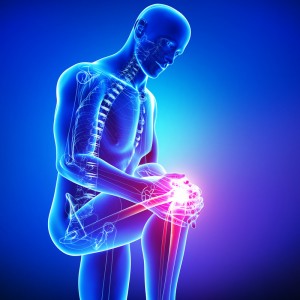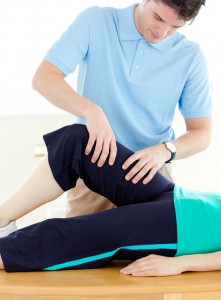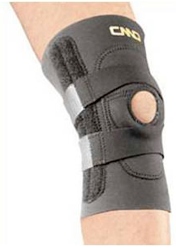Knee pain is a musculoskeletal problem that is becoming increasingly common due to work injuries. The knee bears a significant amount of body weight that is often over two to  four times body weight. It is also able to rotate and twist and for this, it relies on the bones, tendons, the cartilage and the ligaments.
four times body weight. It is also able to rotate and twist and for this, it relies on the bones, tendons, the cartilage and the ligaments.
Common Causes of Knee Injuries
Some of the common causes of knee injuries at work are torn ligaments or tears of the cartilage or inflammation of these parts. Knee injuries from falls or twisting injuries can also result in chipping of the bone or the cartilage, resulting in swelling and pain.
The bursa (fluid sac) in the knee can also be hurt due to a fall or due to overuse. A kneecap could also become dislocated, leading to pain and swelling. Swelling of tendons, tendonitis, could also be the cause of the problem.
This may include an ACL tear, meniscal tear, or focal cartilage defect. These may require surgery along with significant pain management, bracing, injections and more.
Common Treatment
Some of the common treatments consist of protecting the knee from further trauma and pain. Treatments can consist of compression wraps as well as rest and ice along with  elevation measures. Physical therapy can help strengthen up the muscles around the knee and help take pressure off the knee for pain relief.
elevation measures. Physical therapy can help strengthen up the muscles around the knee and help take pressure off the knee for pain relief.
Protection can be given by padding or splinting, with the help of a pad placed over the kneecap. Knee pain arising from knee injuries can be protected in this way and it also prevents further injury to the bursa.
Rest/Ice pack/Elevation
The knee must get proper rest and not be repeatedly strained. Ice can be used to reduce swelling for chronic knee pain as well as acute pain. This can be done for about twenty minutes at a time, about two to three times in a day. An ice bag can be placed over the knee to provide relief.
The knee should also be elevated. In this way, the fluid does not collect in the knee and is able to go back into the central circulation. When sitting, you can prop your knee. You can also sit in a reclining position, thereby elevating the knee. The knee should be placed higher than the heart level.
Medications
There are many pain relievers, with anti inflammatory drugs, such as NSAIDS and non steroidal drugs. They can control pain and even reduce the inflammation. Topical pain medications may be utilized and provide pain relief locally without having to take medicine by mouth. These may include anti-inflammatory medicines, capsaicin, and others.
Injections
When a knee injury occurs at work, a knee injection may help tremendously with a work injury doctor. A steroid injection into the knee may offer months of pain relief at a time. Hyaluronic acid injections with a substance such as Synvisc can also provide six to twelve months of pain relief and help patients avoid surgery.
Bracing
For individuals with ligament injuries such as an ACL tear, functional bracing may provide support and pain relief. They can allow individuals to get back to work, and provide an alternative to surgery.






Leave A Comment